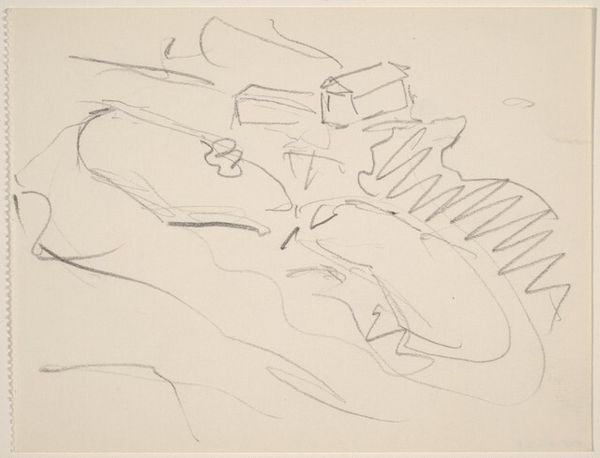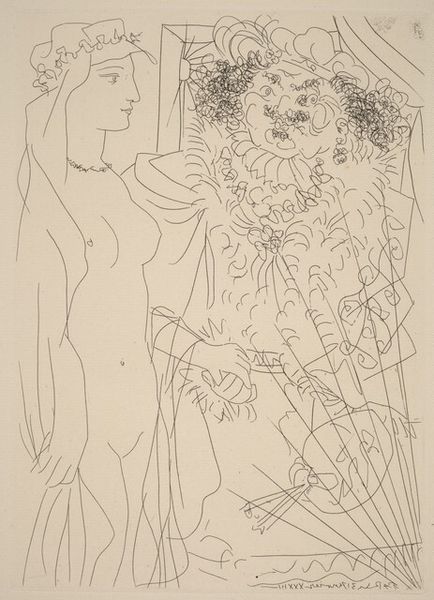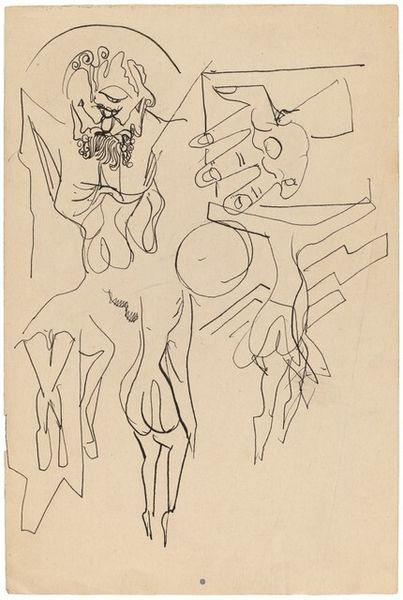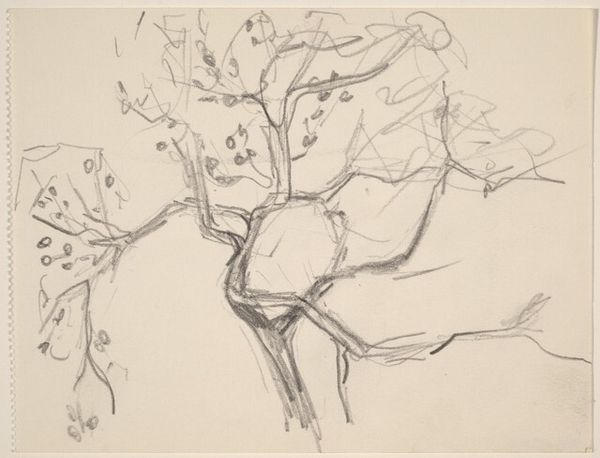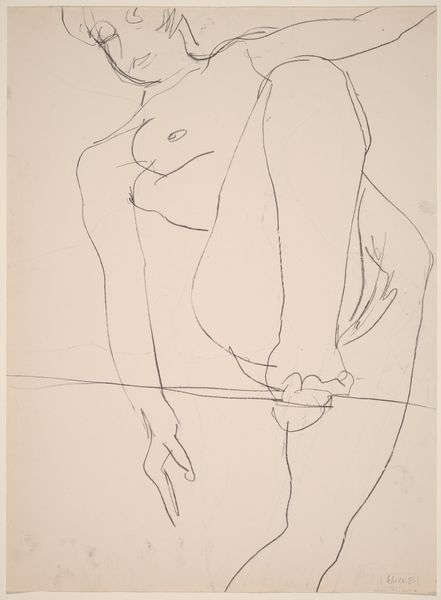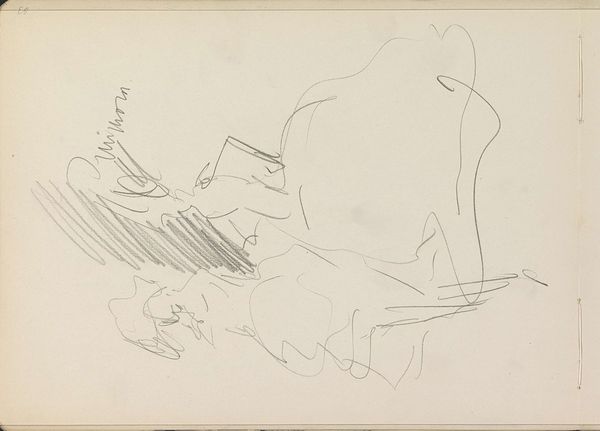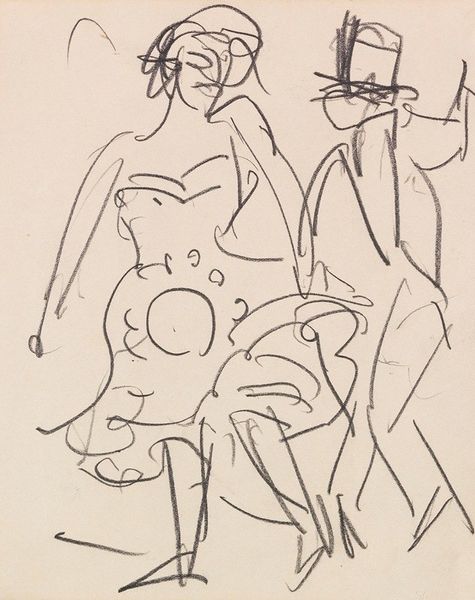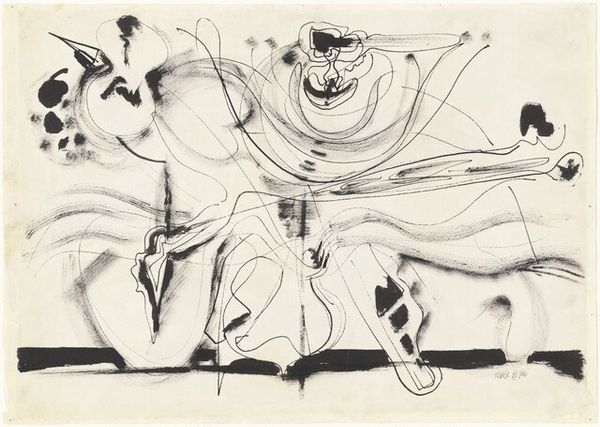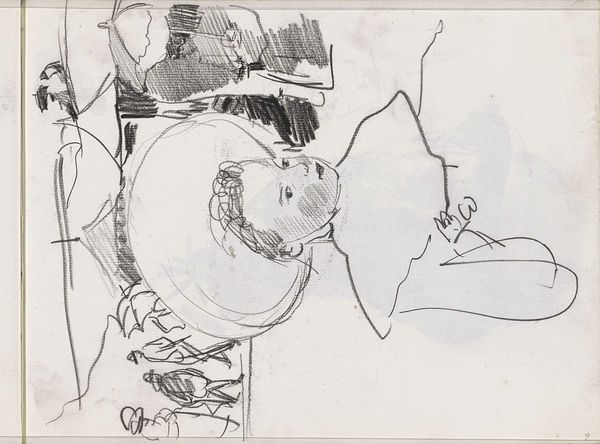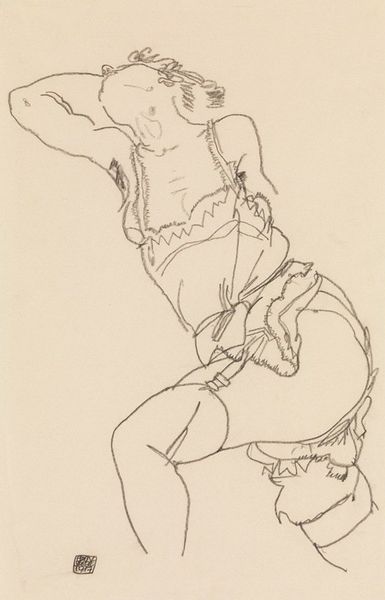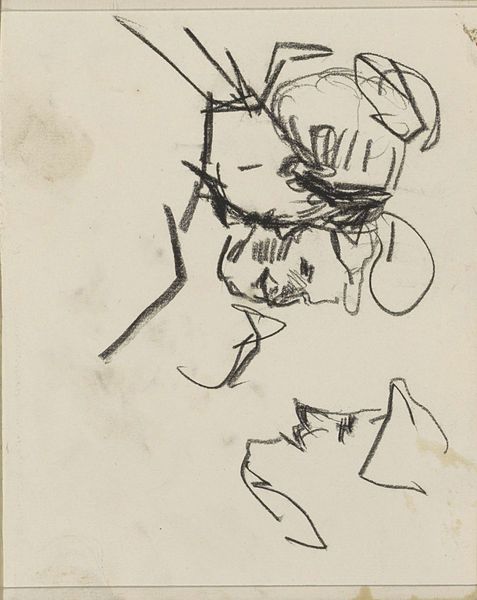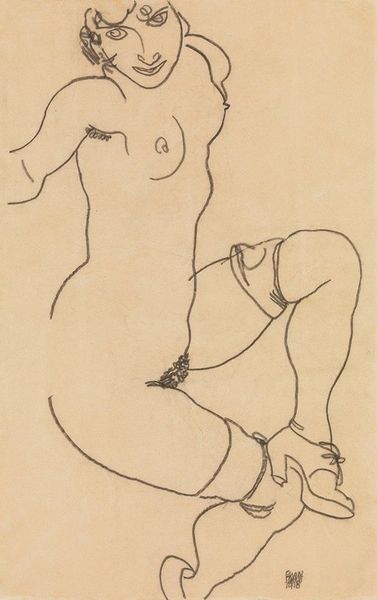
drawing, ink
#
drawing
#
organic
#
ink drawing
#
pen sketch
#
ink
#
abstraction
#
line
Dimensions: sheet: 35.56 × 27.94 cm (14 × 11 in.)
Copyright: National Gallery of Art: CC0 1.0
Curator: Here we have Keith Martin's "Drawing No. 19" from 1971. The piece primarily employs ink to create an abstract and organic form. What's your immediate reaction to this piece? Editor: Well, my gut feeling? It feels like looking at the inside of someone's imagination – all those strange connections and meandering thoughts floating about. A bit unsettling, honestly. Curator: Unsettling in what way? The linework, although delicate, constructs a rather ambiguous morphology, wouldn't you agree? The thin lines give an airy feeling of lightness while also giving tension through repetition. Editor: Exactly. Like an alien autopsy report meets a botanical illustration. There's a strangeness there but, the careful linework gives the composition a sort of calculated whimsy, you know? I wonder what state of mind Martin was in while inking. Curator: His abstraction of organic forms can be interpreted through the lens of post-structuralism, the interplay between presence and absence signified by the varying line weight, creating an endless interpretation, a state of continual reevaluation. Editor: True, true. You know, when I squint, the lower part gives me a real, almost uncomfortable sensation of anatomy? And look closely – what appears to be hair growing down what resembles a slender stem of a leg-like thing. And those odd nodules...shivers. Curator: This application disrupts traditional perspective and challenges representational norms; one sees a dismantling, a reassembling of the seen and the felt...what does it mean, for example, to draw an abstract idea in this mode? Editor: I see what you mean, almost like creating an emotional Rorschach test. There's a playfulness mixed in, though. Almost feels cheeky? What do you think its effect would have been at the time it came out, that is to say, 1971? Curator: The period marked the continued exploration of abstraction after the high formalism, so pieces like this opened new discussions of how abstraction can reference interior, subjective experiences. Perhaps not so bound to theories about forms. Editor: Interesting point! Thinking of this, perhaps the oddness isn't meant to scare us but invite a closer inspection of our own hidden weirdnesses... and beauty too. I actually feel drawn to it more as we dig in. What a trip! Curator: It demonstrates the remarkable potential for the artist’s line, doesn’t it? Revealing a complex interplay of form and content. It provokes many interpretations of inner form and invites personal reflections from different voices to take the stand, I'd say!
Comments
No comments
Be the first to comment and join the conversation on the ultimate creative platform.
